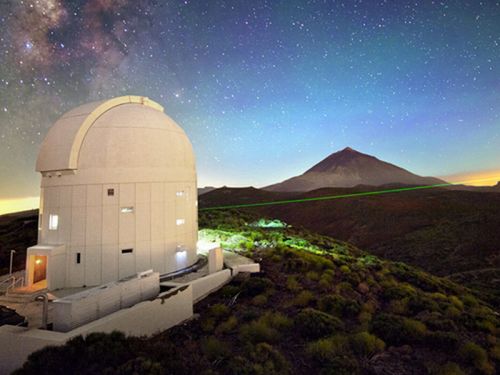Researchers from NASA and MIT have been trying to create a two-way laser link communication between the Moon and the Earth. The effort has been initiated last year in the month of Oct. First step concluded by beaming of laser light from a spacecraft orbiting the moon to the earth, at White Sands, New Mexico. And then the beam was sent to the spacecraft from the lab and this process went for about a month. Space scientists have dubbed it as Lunar Laser Communication Demonstration (LLCD).
The entire mechanism went successfully and the results were beyond expectations, it was like an engineer’s dream come true.
Communications were made during the various stages and varied positions of moon. The attempt was also made during turbulent atmospheres and through the layers of clouds. Every time, the space scientists were able to obtain an error-free communication.
Researchers working at the aerospace are always looking out for high definition images and videos, which as per the conventional method is difficult to receive. The two main huddles that they encounter at the receiving end are, first, the radio links are way too slow and secondo, they require spacecraft sized antennas, which of course is a tricky business. However, the new laser communication can help them with both the issues. Laser systems are relatively smaller in size and is hundred times faster that radio links.
Researchers envision that deep space laser communication might facilitate high bandwidth communications, which will become prerequisite when communicating with cosmonauts who would go further than the moon.
Demonstration
When the laser beam is turned on pointing to a satellite from LLCD’s ground terminal (at New Mexico), the space module immediately scans it and reverts its 0.5 watt laser beam back. Both the terminals then incessantly fine-tune their pointing.
Over the ensuing weeks, the team beamed high definition videos from the earth and it was observed that it took nearly 1.3 seconds to travel from earth to moon. Later they noted that the videos they received back took a 7-second lag.
Exciting Achievement
The lunar orbiter’s relevant data, which was nearly 1GB, was downloaded in not more than 5 minutes, while the same data would have 3 days had the radio system been sending the data back to earth.
The entire demonstration was done in the absence of radio link. The spacecraft was programmed to co-ordinate with the LLCD terminal both at the space as well as at the earth.
It does sound an exciting achievement but the researchers want it to keep in testing phase as of now.
Not a Final Mockup
Although, this is not the final mockup, as per NASA, the communication will take place for another five years so as to fully test the reliability of laser communication technology. The second demonstration is scheduled for launch in 2017, with a target of establishing laser link as a rate of 1GB per second.




